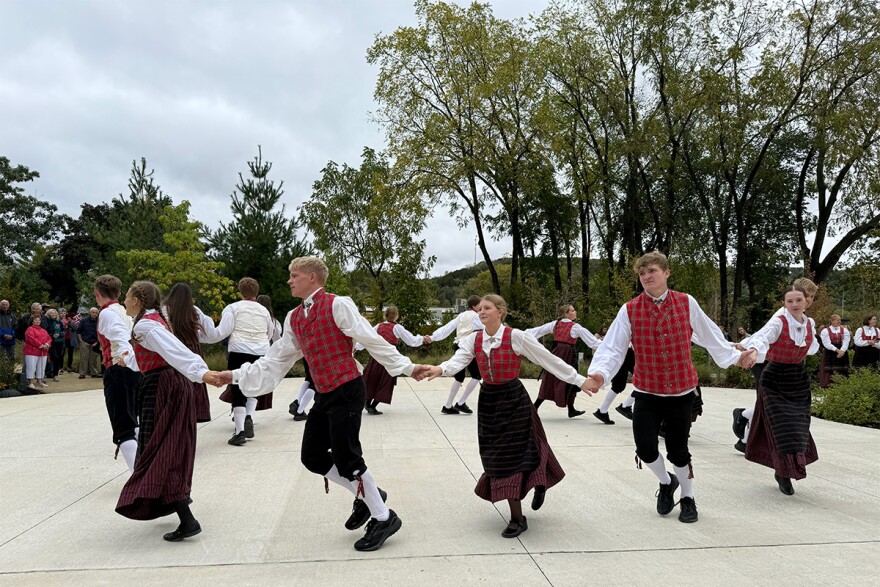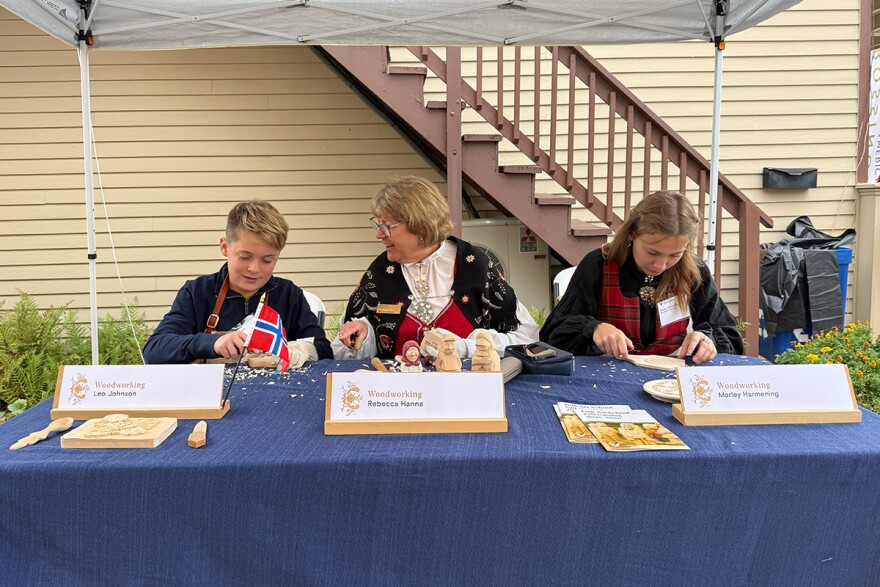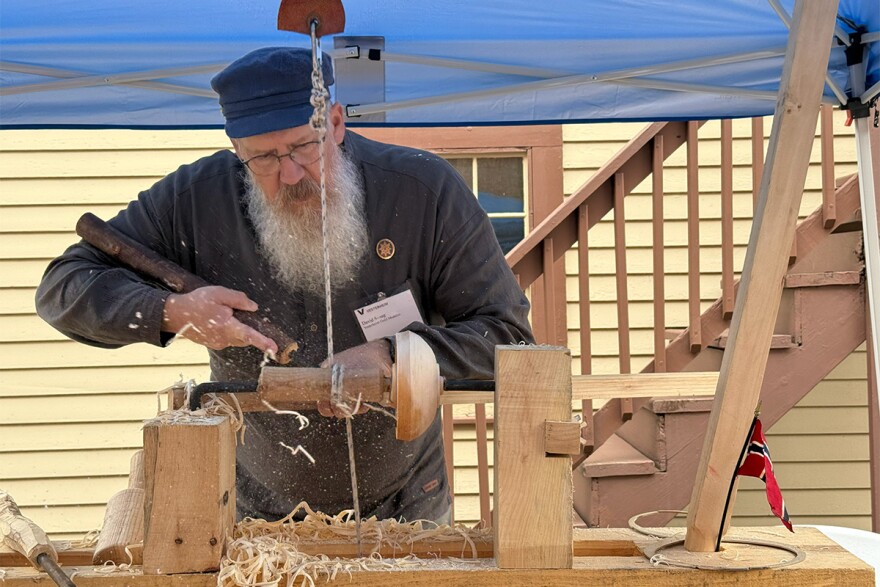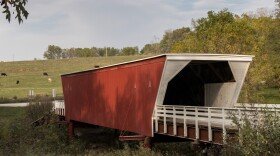On Oct. 9, 1825, a ship called the Restauration arrived in the United States with 52 passengers. It was the first organized Norwegian immigration to North America. In the years since, more than 800,000 Norwegians have emigrated to the U.S. Today, nearly five million Americans claim Norwegian ancestry.
Many early Norwegian immigrants settled in Iowa and other parts of the Midwest, seeking land and opportunity. This Norwegian heritage is still present in communities like Decorah, home to Luther College, the first U.S. college founded by Norwegian immigrants.

The northeast Iowa town welcomed Norway’s Crown Prince Haakon this week to celebrate the 200th anniversary of Norwegian immigration. This was the crown prince’s second visit to Decorah, and the Norwegian royal family’s ninth visit overall. Crown Prince Haakon's visit to Iowa was part of a tour including Minnesota and New York. While in Decorah, he toured the Vesterheim Museum and Folk Art School, which dedicated its new commons to the royal family at a ceremonial ribbon cutting.
“Being here at Vesterheim, surrounded by all these Norwegian flags and people in bunads and all your nice sweaters, I feel almost more Norwegian than I do at home,” His Royal Highness said.

The celebration included a visit with descendants of those who arrived on the Restauration, dancing, folk-art and food demonstrations.
11-year-old Leo Johnson took up wood carving when he moved to the area about a year and a half ago. His mom, who worked at Vesterheim, introduced him to the folk art school offerings.
“Wood carving, you just really get to express yourself. It's always a pleasure, because if you mess up, you get to decide, 'Well, am I gonna be hard on myself for that mistake, or am I gonna make it into something beautiful?'” Johnson said, as he held a piece of wood he was in the process of carving into a Dala horse. “Like I one time cut off a part of my Dala horse, and I just made a little tail instead. So you have a lot of freedom over what you decide you can do. Messing up isn't really messing up, it can always be something new.”

Johnson and another local folk artist, 17-year-old Marley Harmening, shook the prince's hand and had their art complimented by the royal Norwegian. Harmening said she feels special knowing how to make these projects, since not many people her age have these skills.
“I just feel like I actually have a heritage. Being able to dress up nice, I feel connected, and I feel like there's a part of me that is Norwegian. I can celebrate that,” Harmening said.

Later in the day, the prince received an honorary degree from Luther College, exactly 60 years after his father, now King Harald V, received an honorary degree, on October 6, 1965. His Royal Highness then reflected on how far Norwegian Americans have come since arriving in the Unites States.
“It was that promise of a brighter future, I think, that drove people to make the crossing to the other side of the Atlantic,” he said. “And I'm very impressed by what I've seen here. There is a lot of good work that has been done here at Vesterheim and I think it's very impressive how the Norwegian American community continues to be proud of their heritage and keep that story alive today.”
The prince, Vesterheim and Luther College also acknowledged that the opportunity and land that Norwegian settlers found in the United States cannot be separated from the Indigenous people who had lived on the land for thousands of years before.
"It is important to remember that Vesterheim stands on land that was once home to the Ioway, Sac, Fox, Dakota, Winnebago and Ho-Chunk people," said Chris Johnson, president and CEO of Vesterheim. "We acknowledge that the history of this area is directly tied to that sad history of broken treaties and forced migration of Indigenous peoples, and we acknowledge the Indigenous peoples whose relationship to and stewardship of this land continues to this day."
To hear this conversation, listen to Talk of Iowa, hosted by Charity Nebbe. Samantha McIntosh produced this episode.








